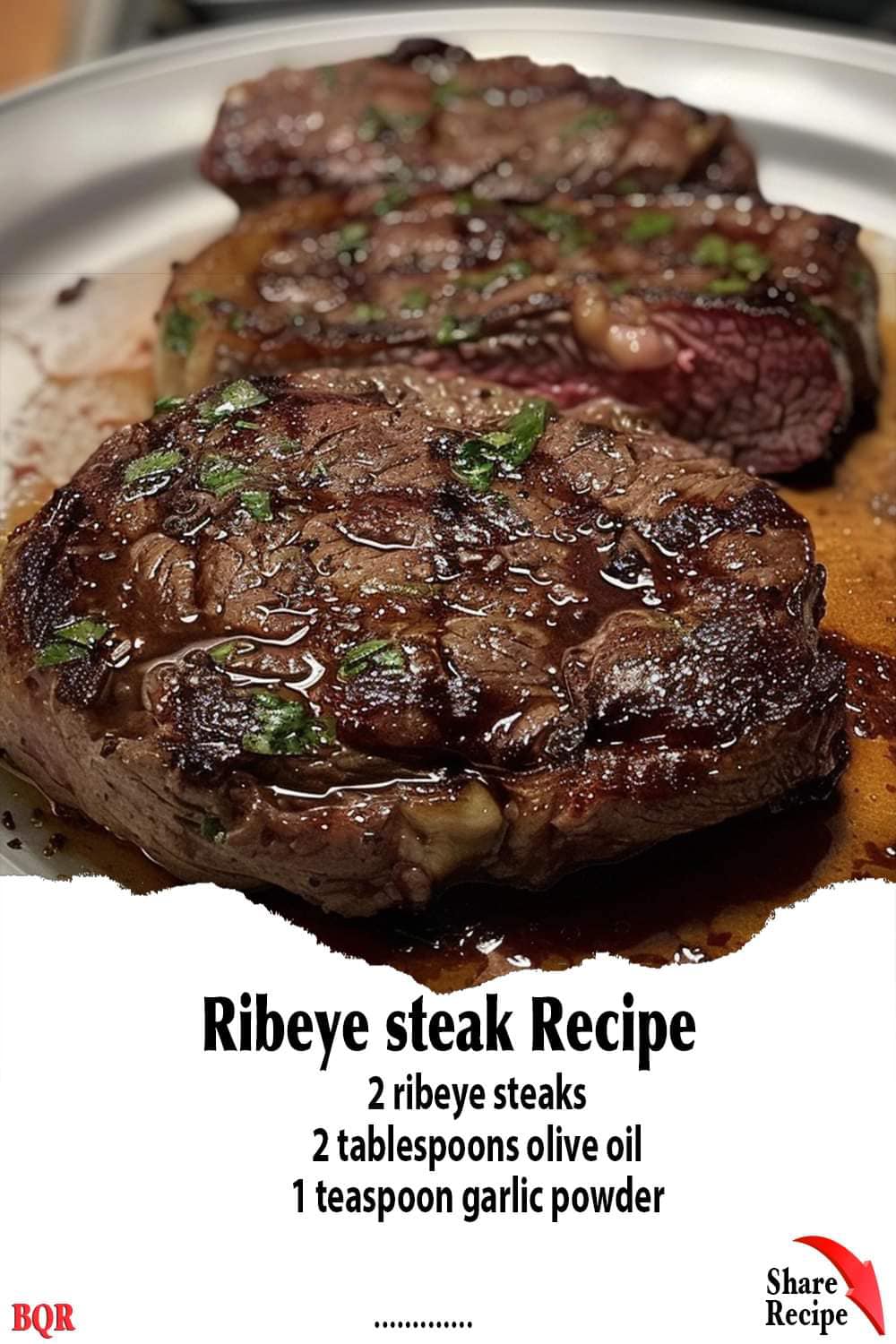Step 1: Prepare the Steak
- Remove from refrigerator: Take the ribeye steak out of the refrigerator and let it come to room temperature for about 30 minutes before cooking. This helps the steak cook more evenly.
- Season the steak: Pat the steak dry with paper towels. Rub both sides with olive oil and season generously with salt and black pepper. If using garlic, sprinkle it over the steak now.
Step 2: Heat the Pan
- Preheat the skillet: Heat a heavy-duty skillet or cast-iron pan over high heat until it is very hot. This is crucial for achieving a good sear on the steak.
- Add oil: Add the olive oil to the hot skillet and let it heat until shimmering but not smoking.
Step 3: Cook the Steak
- Sear the steak: Place the ribeye steak in the hot skillet. Let it sear without moving it for about 4-5 minutes. This will create a beautiful crust.
- Flip the steak: Use tongs to flip the steak to the other side and cook for another 3-5 minutes, depending on your preferred level of doneness (see below for cooking times).
- Rare: 120°F (49°C), about 3 minutes per side
- Medium-rare: 130°F (54°C), about 4 minutes per side
- Medium: 140°F (60°C), about 5 minutes per side
- Medium-well: 150°F (66°C), about 6 minutes per side
- Well done: 160°F (71°C) and above, about 7 minutes per side
- Optional basting: For extra flavor, add a tablespoon of butter to the pan during the last minute of cooking. Tilt the pan and use a spoon to baste the melted butter over the steak.
Step 4: Rest the Steak
- Remove from heat: Transfer the steak to a plate or cutting board.
- Rest: Let the steak rest for 5-10 minutes before slicing. This allows the juices to redistribute throughout the meat.
Step 5: Serve
- Slice and garnish: Slice the steak against the grain and garnish with fresh rosemary or thyme if desired.
- Enjoy: Serve with your favorite sides, such as mashed potatoes, steamed vegetables, or a crisp salad.
Tips and Tricks
- Use a meat thermometer: To ensure perfect doneness, use a meat thermometer to check the internal temperature of the steak.
- Don’t overcrowd the pan: If cooking more than one steak, do it in batches to avoid overcrowding and ensure a proper sear.
- Resting is key: Don’t skip the resting step; it’s essential for a juicy and tender steak.
Conclusion
A perfectly cooked ribeye steak is a treat that’s both simple and luxurious. With a rich, marbled texture and bold flavors, it’s a classic choice for a memorable meal. Follow these steps for a delicious and tender steak that’s sure to impress.
Feel free to adjust the seasoning and cooking times to match your personal preferences. Enjoy your ribeye steak!
